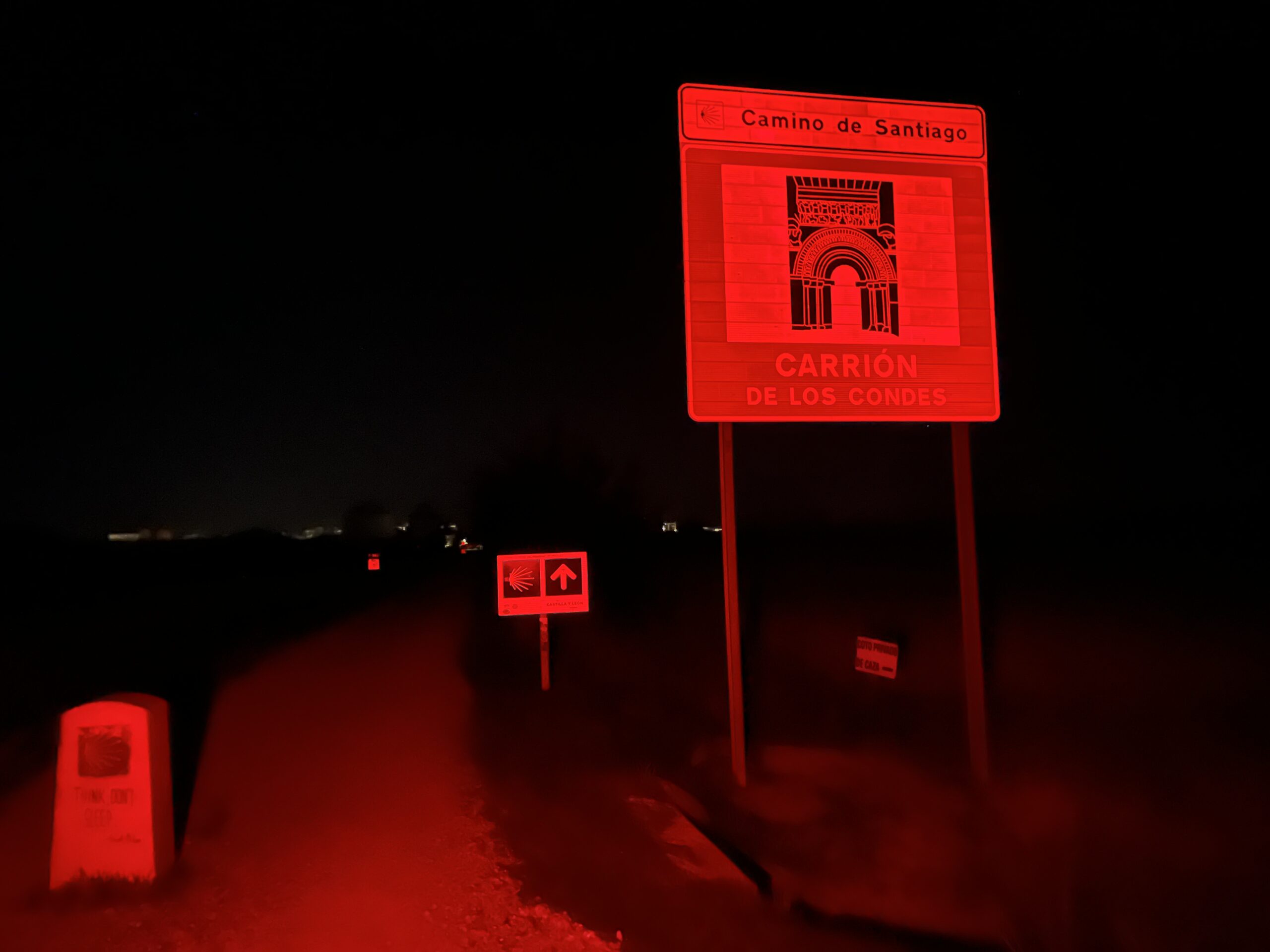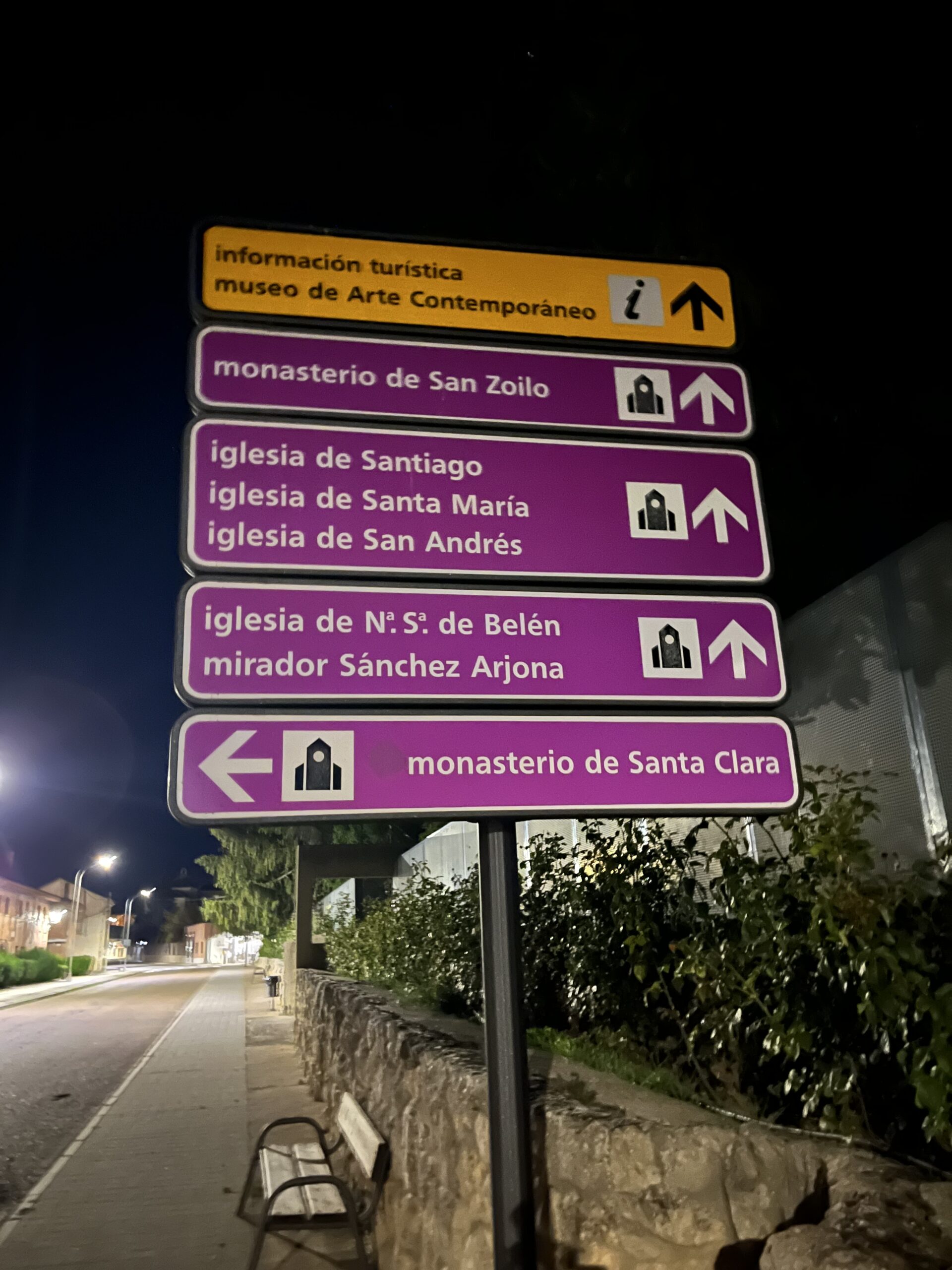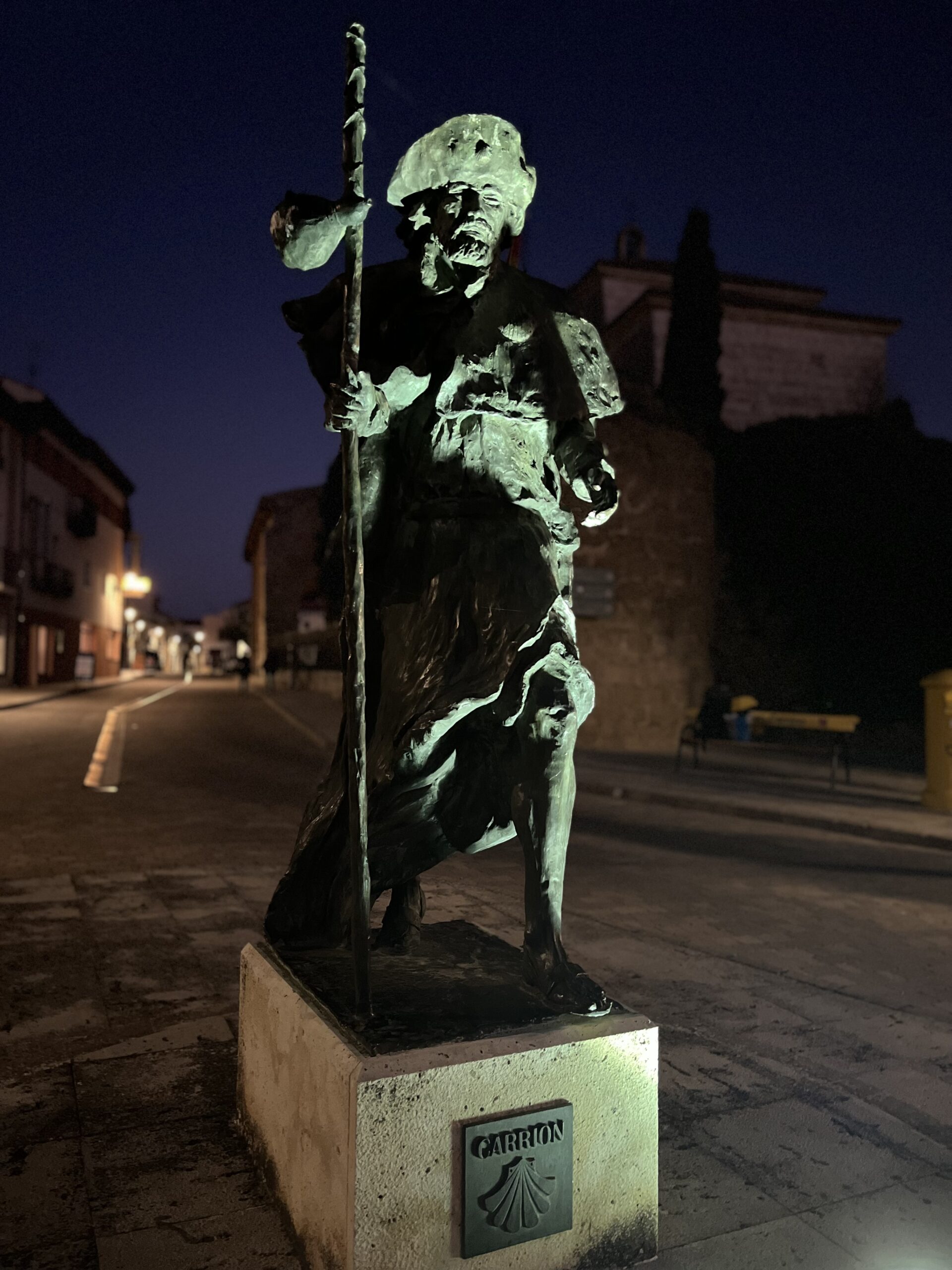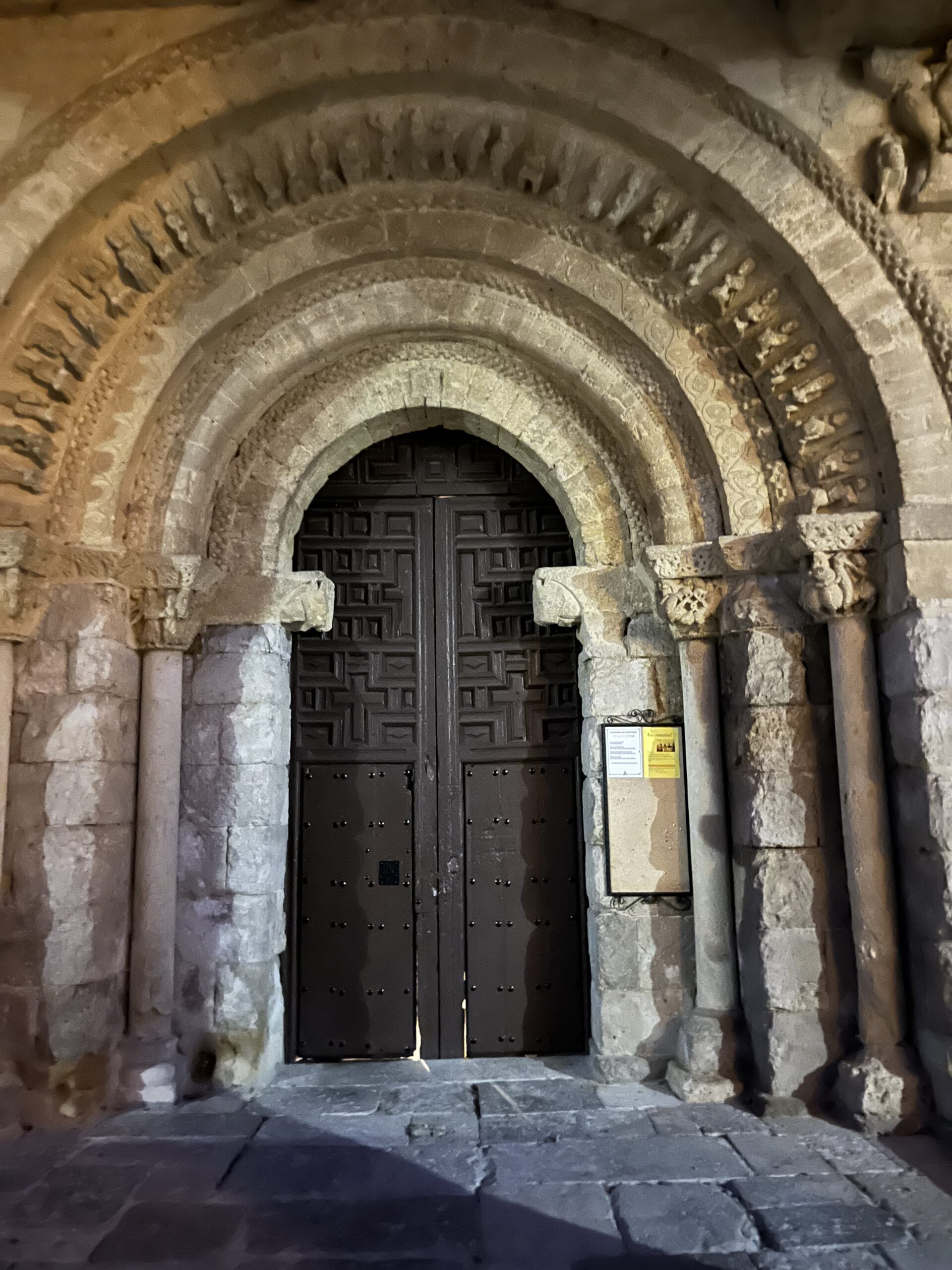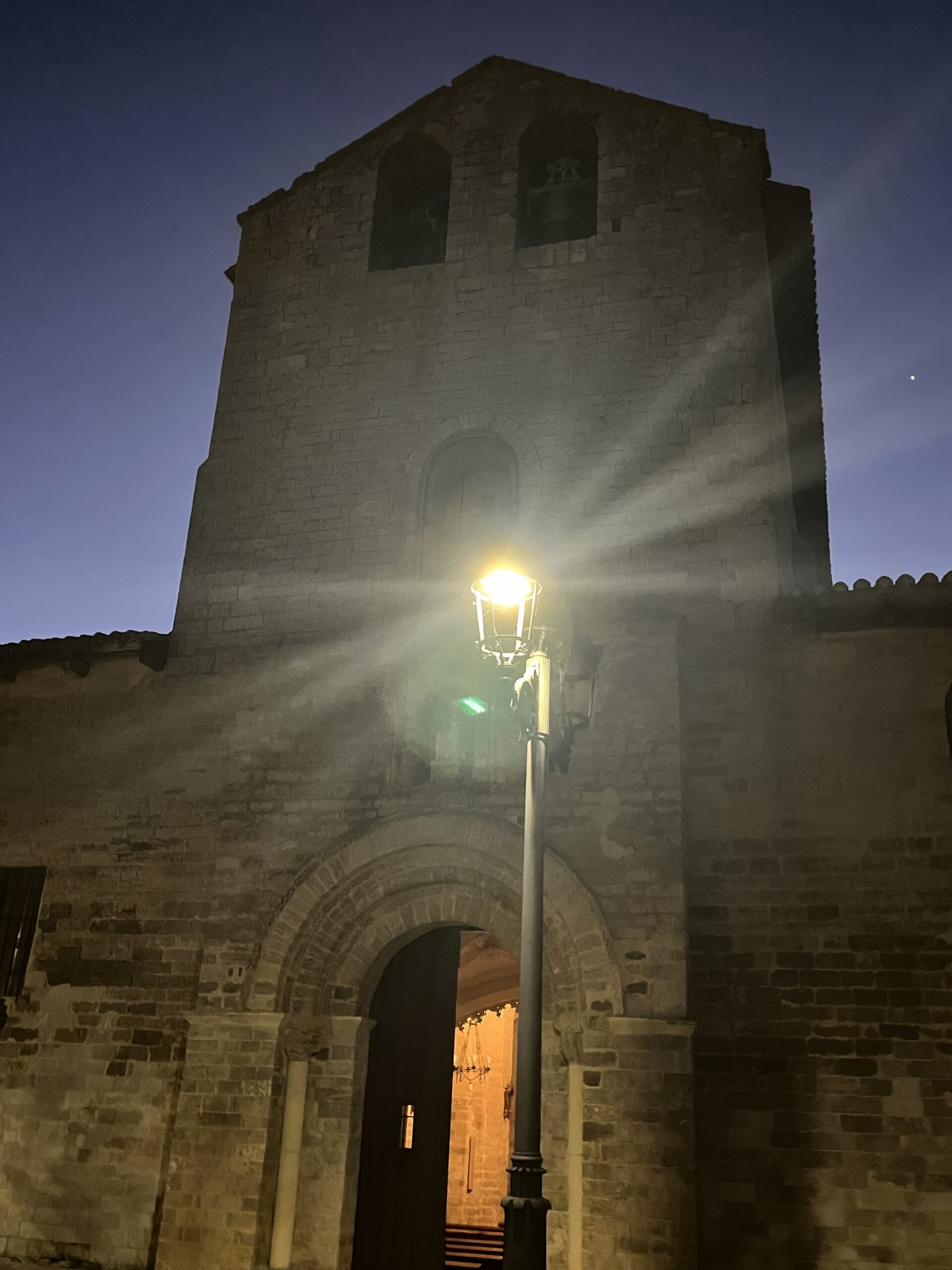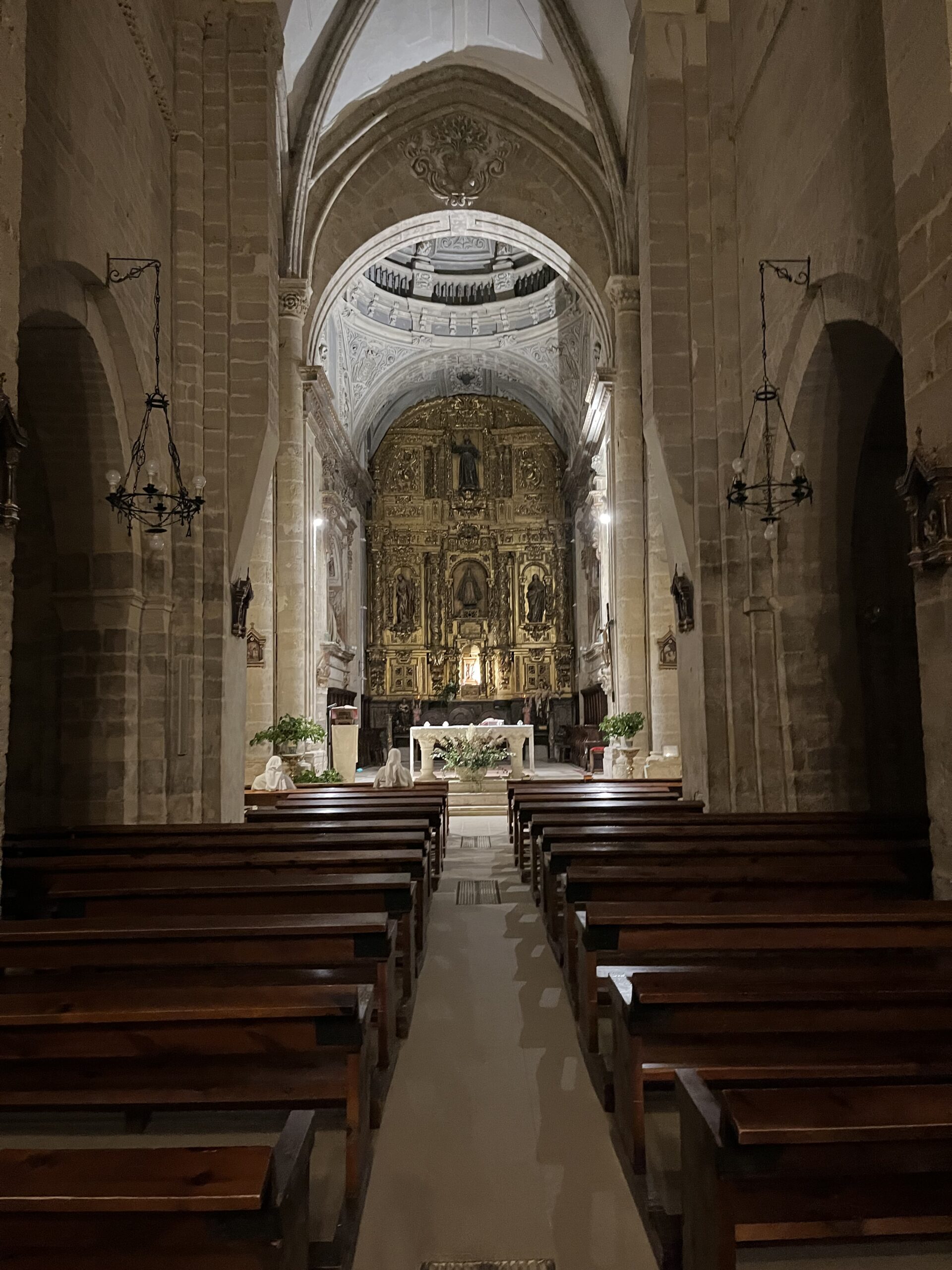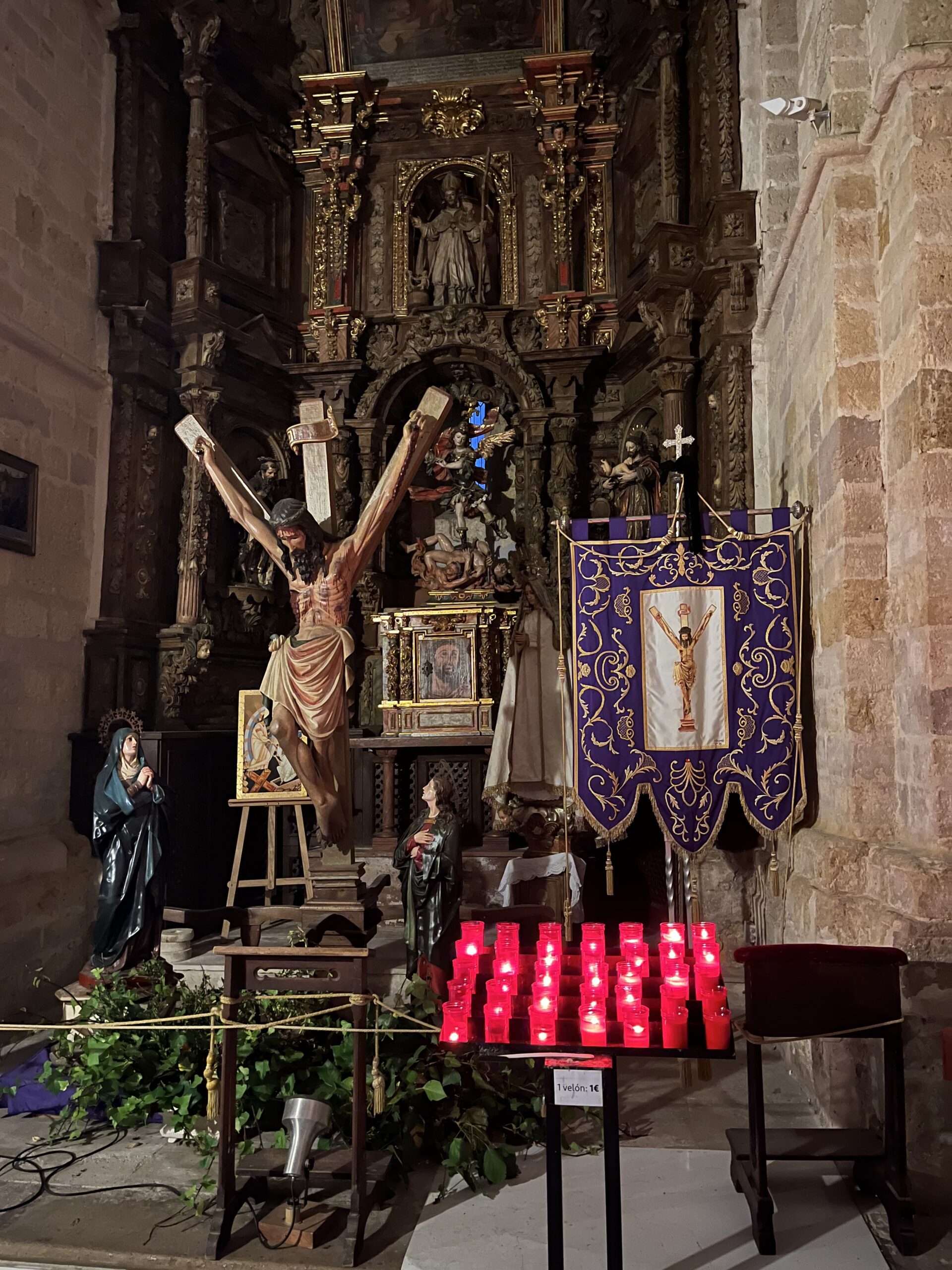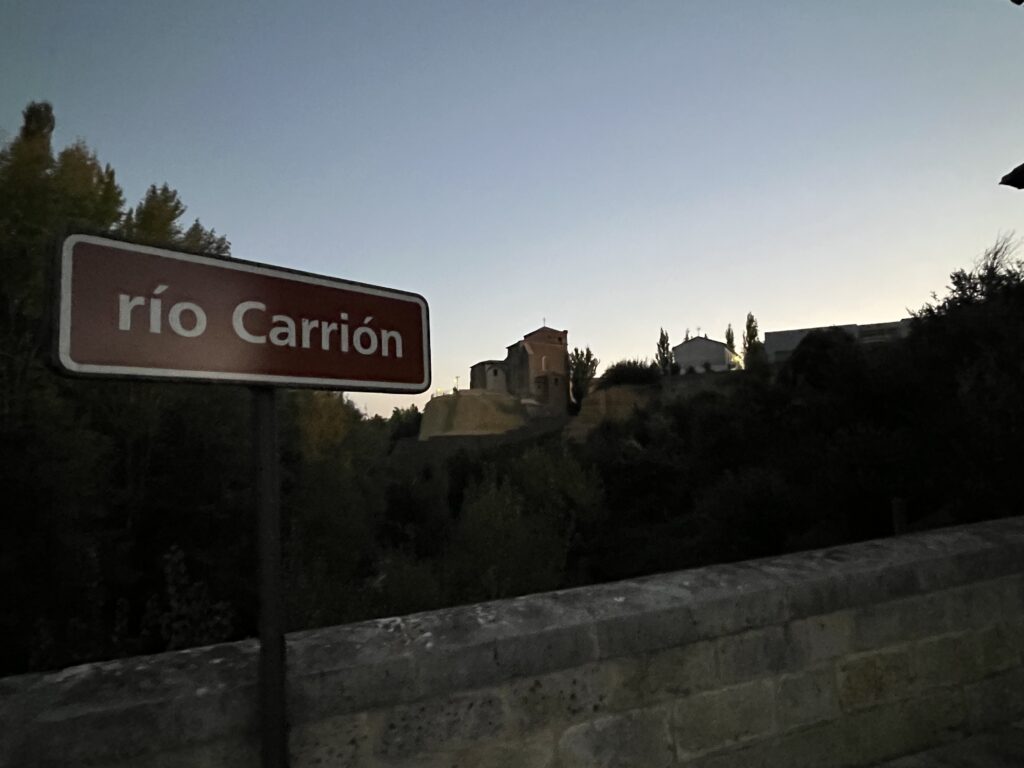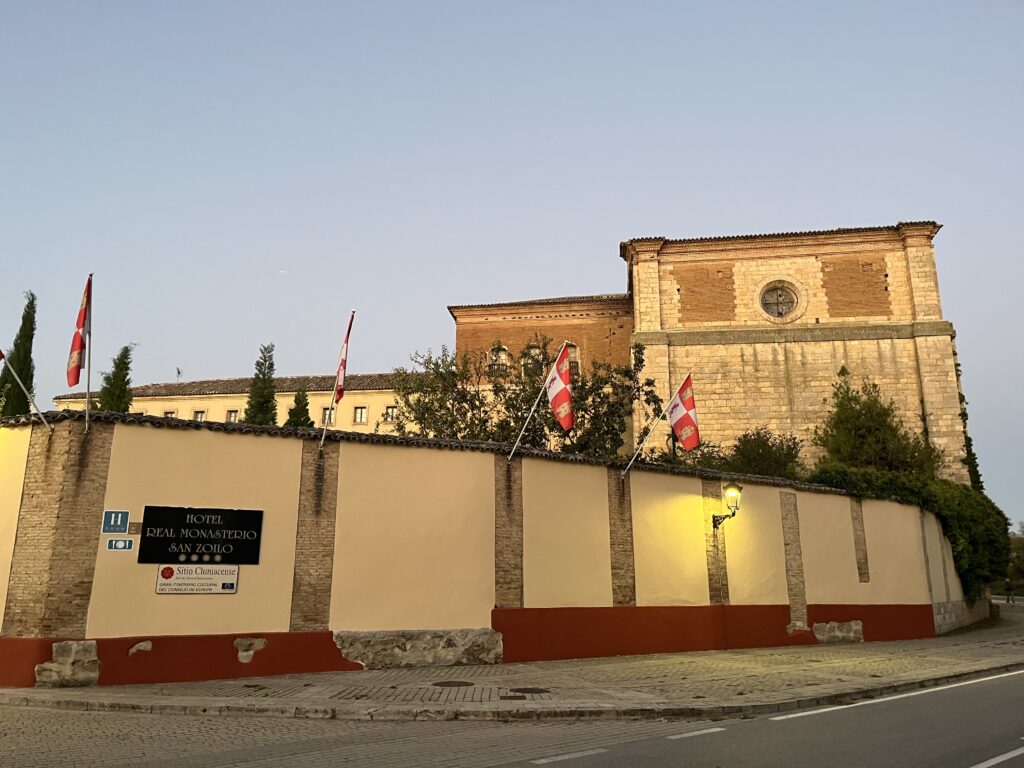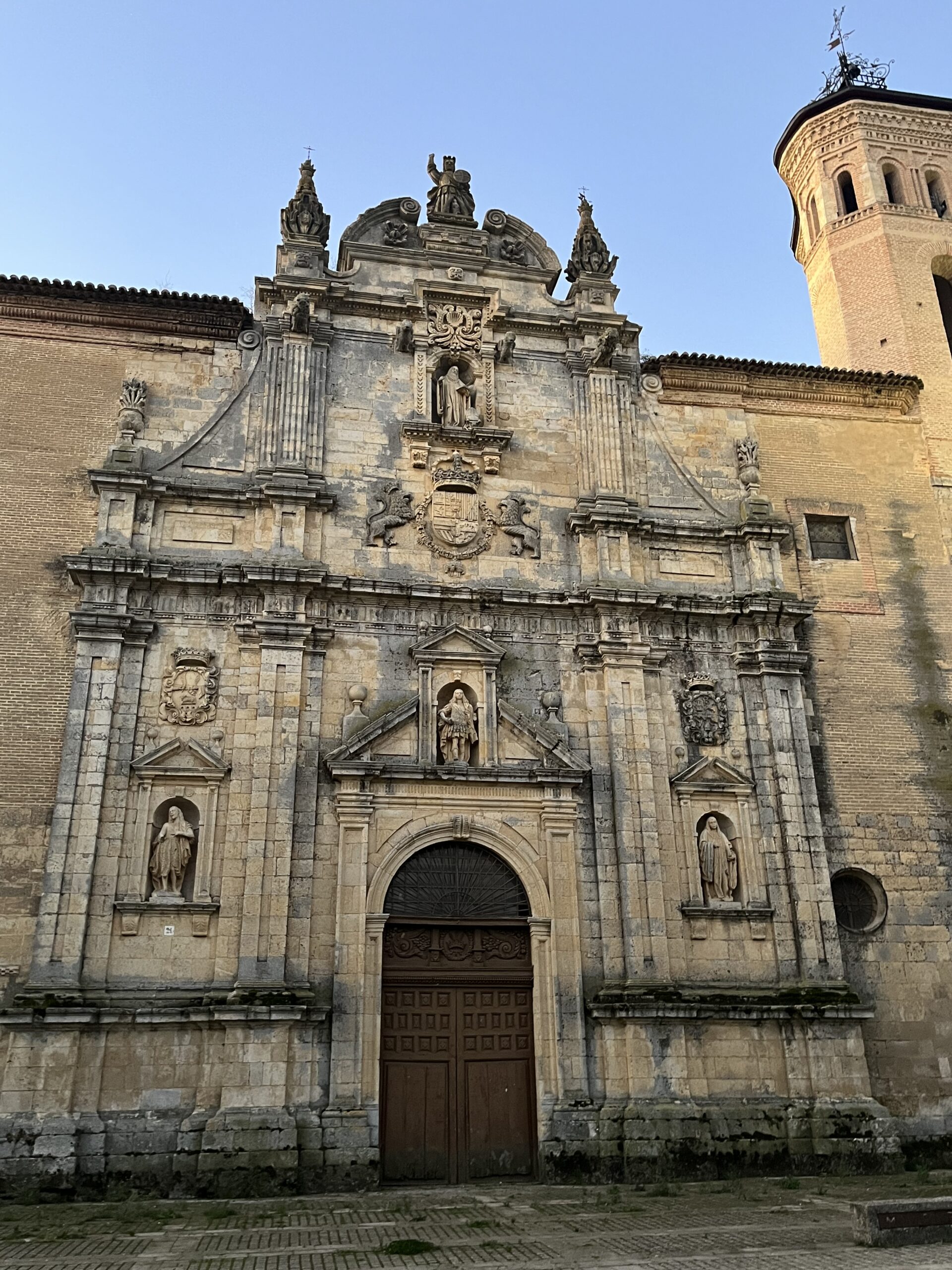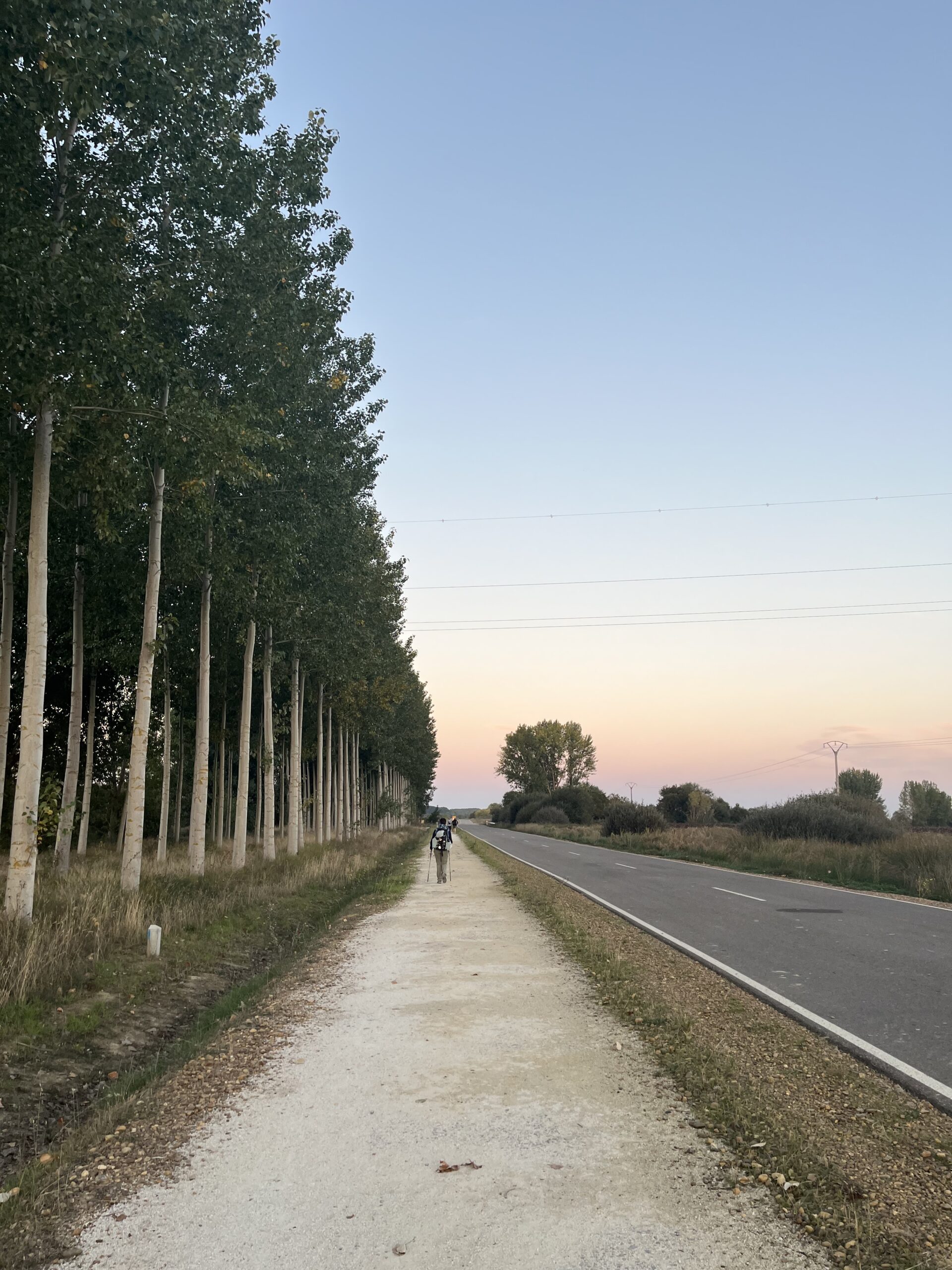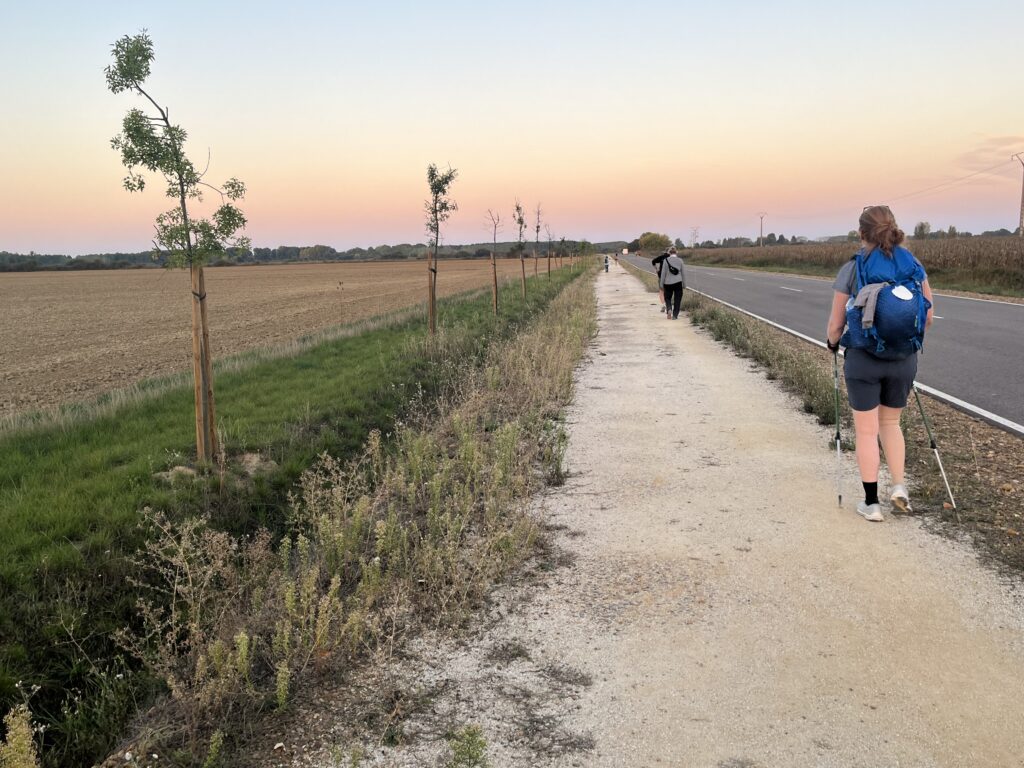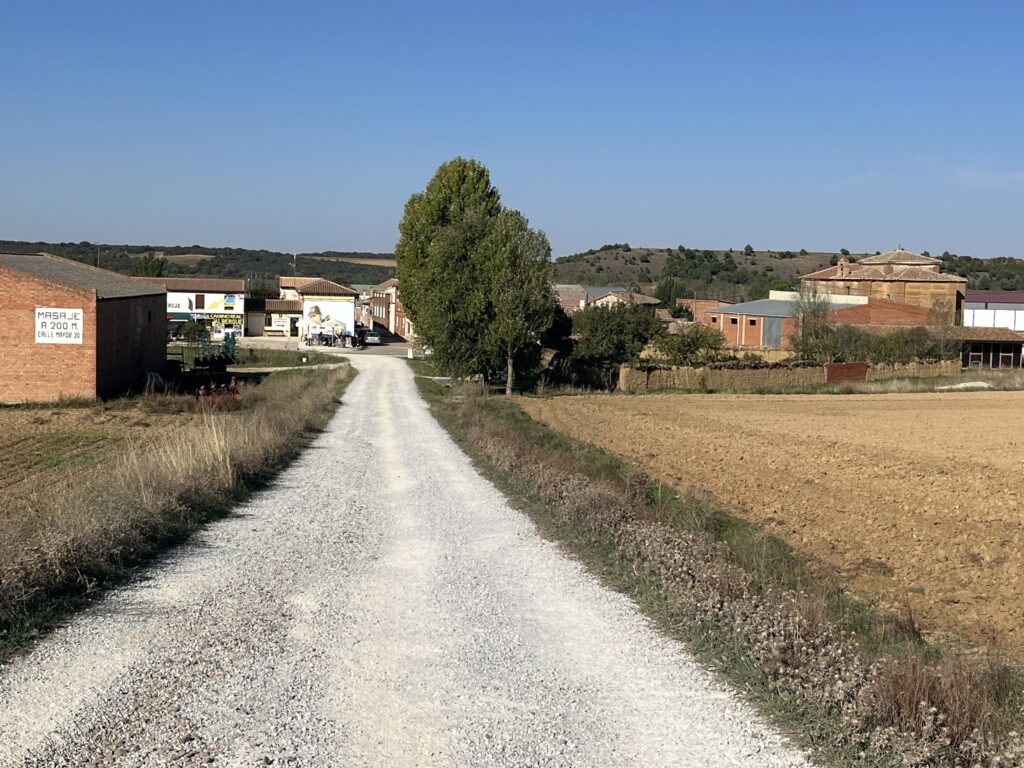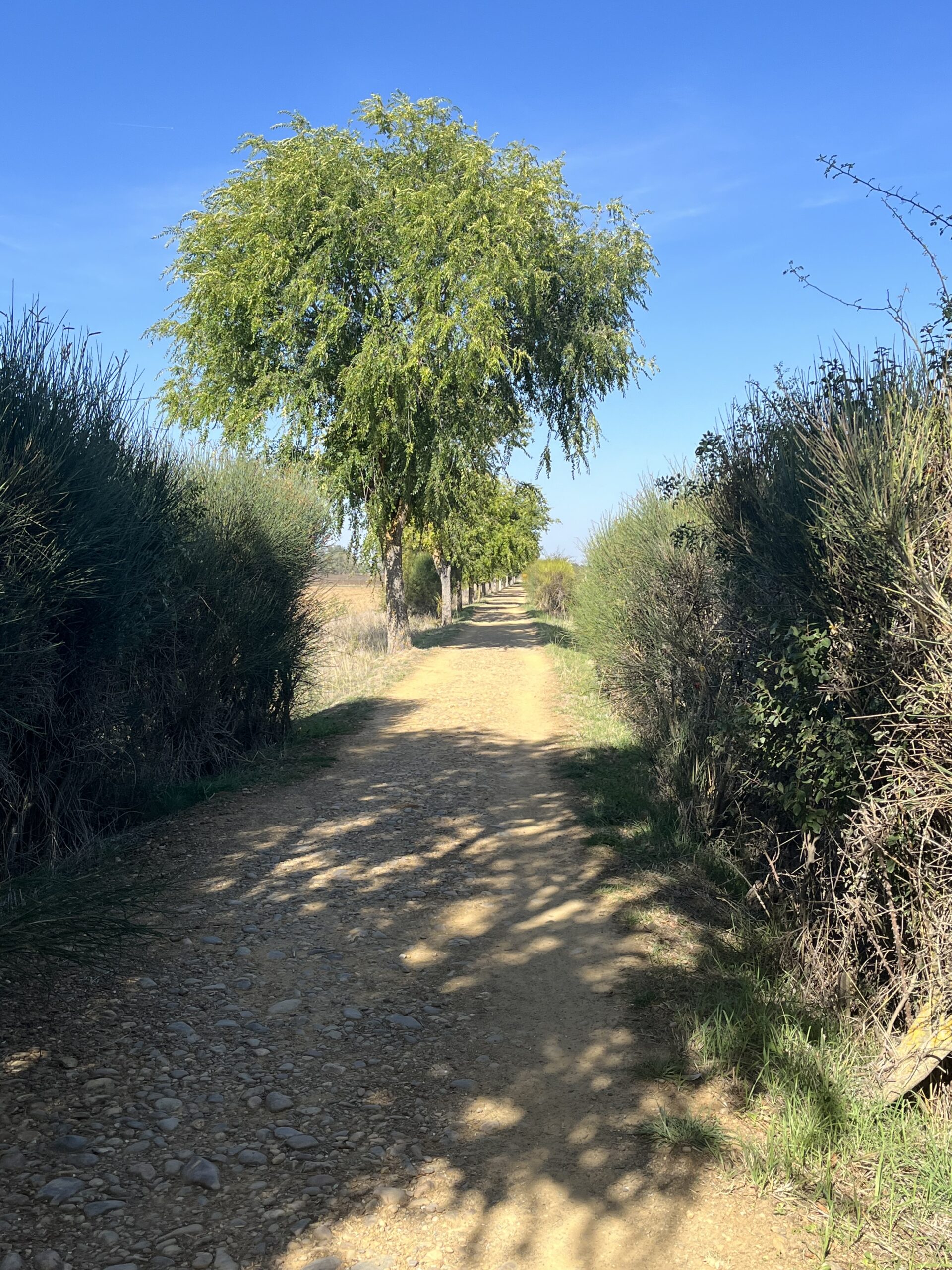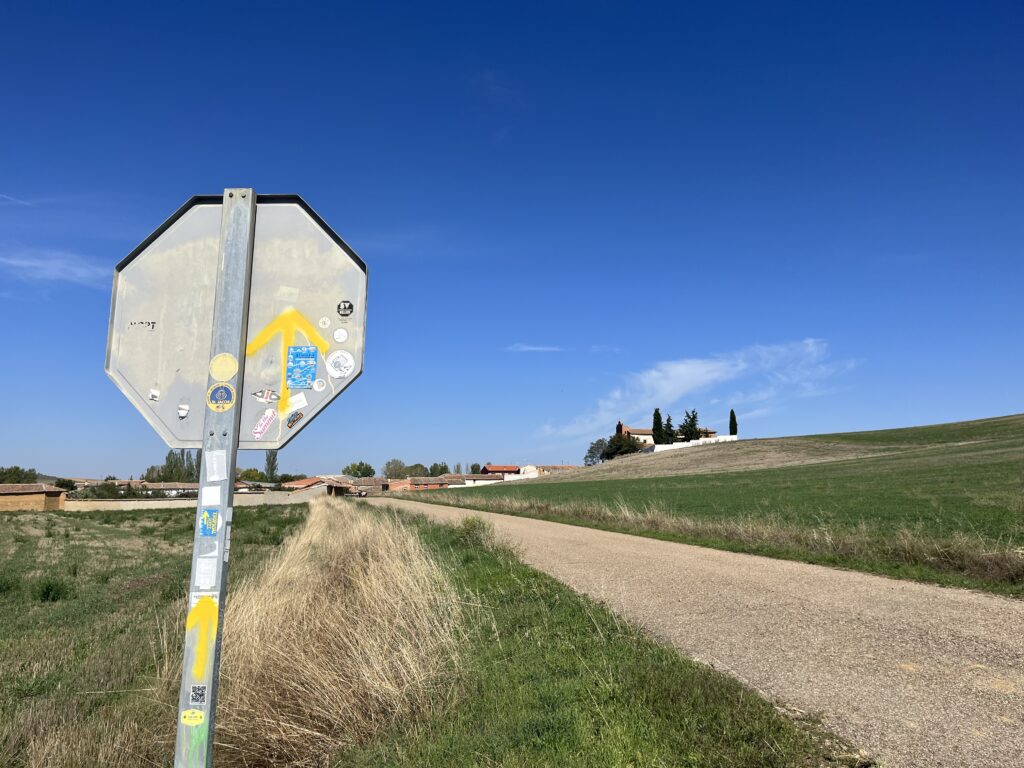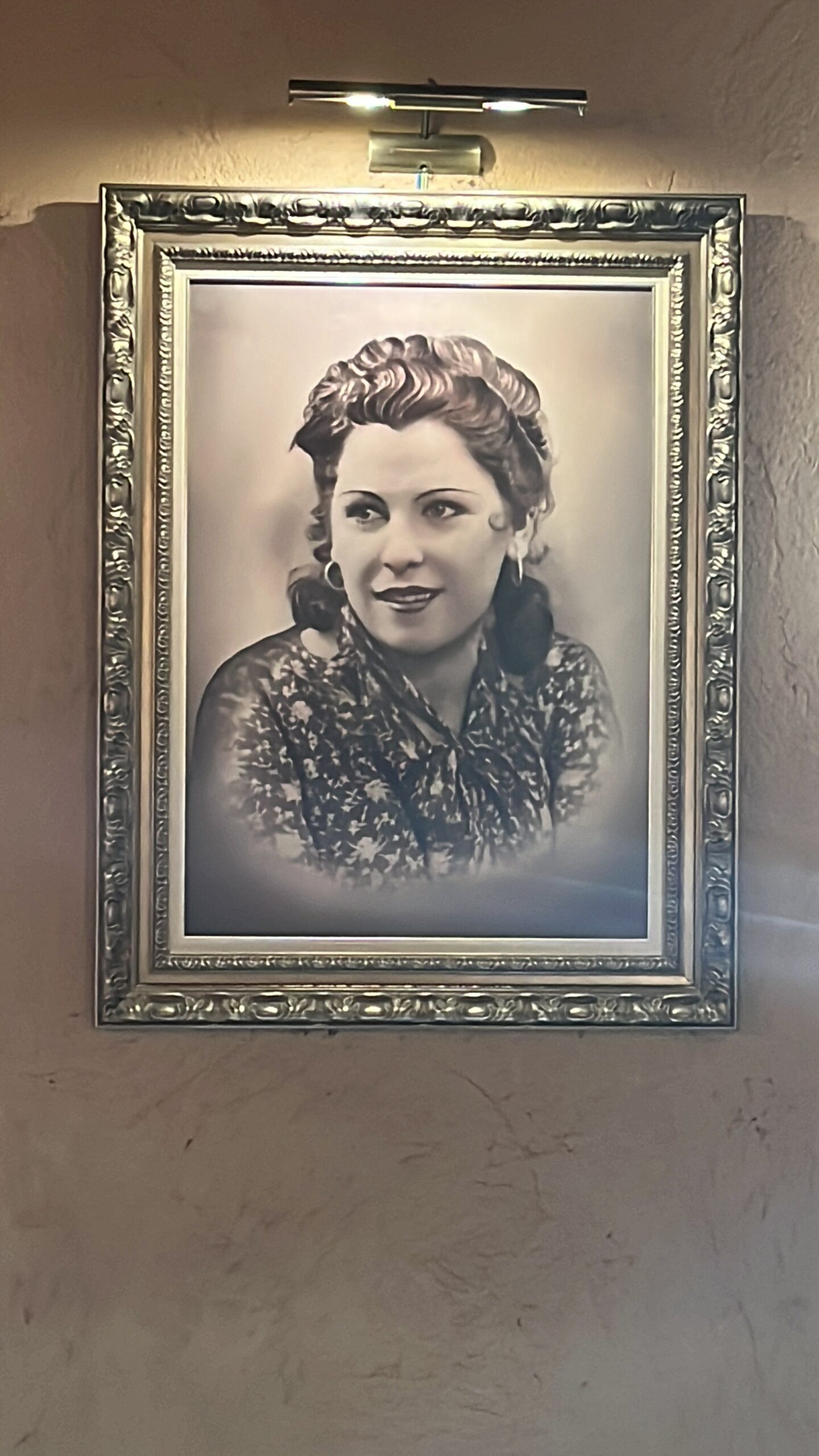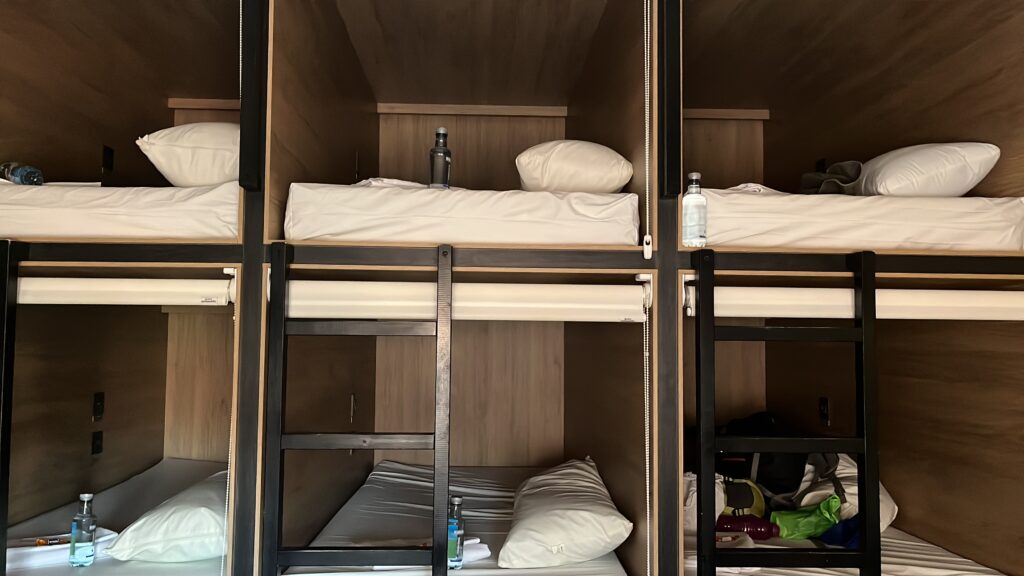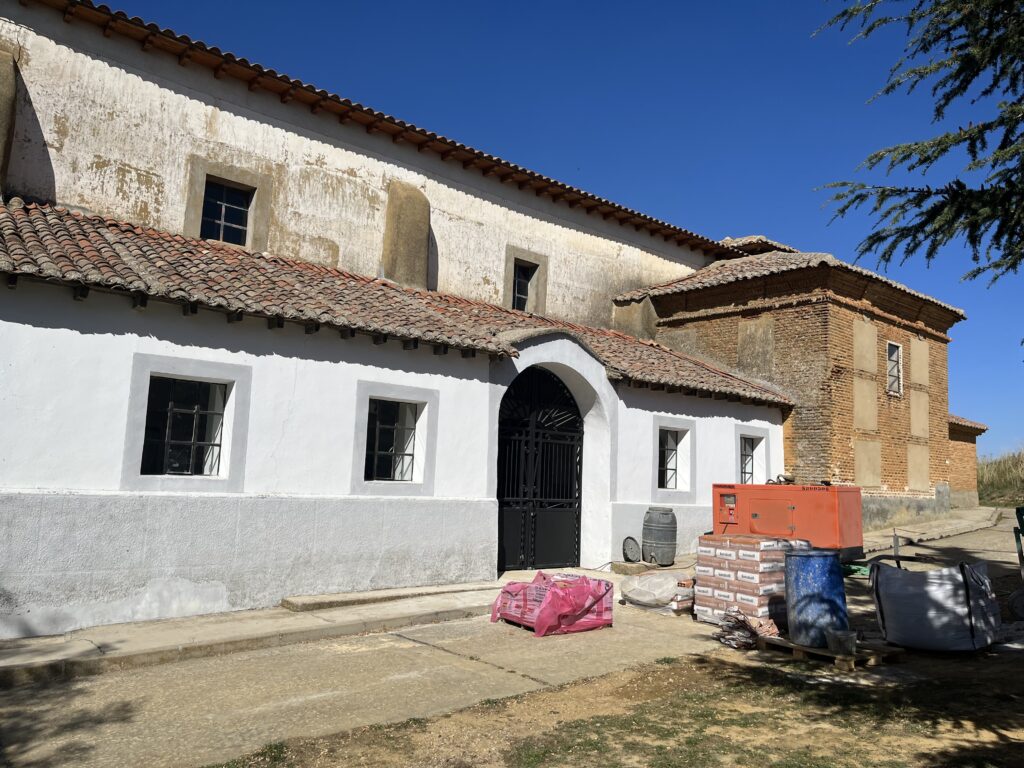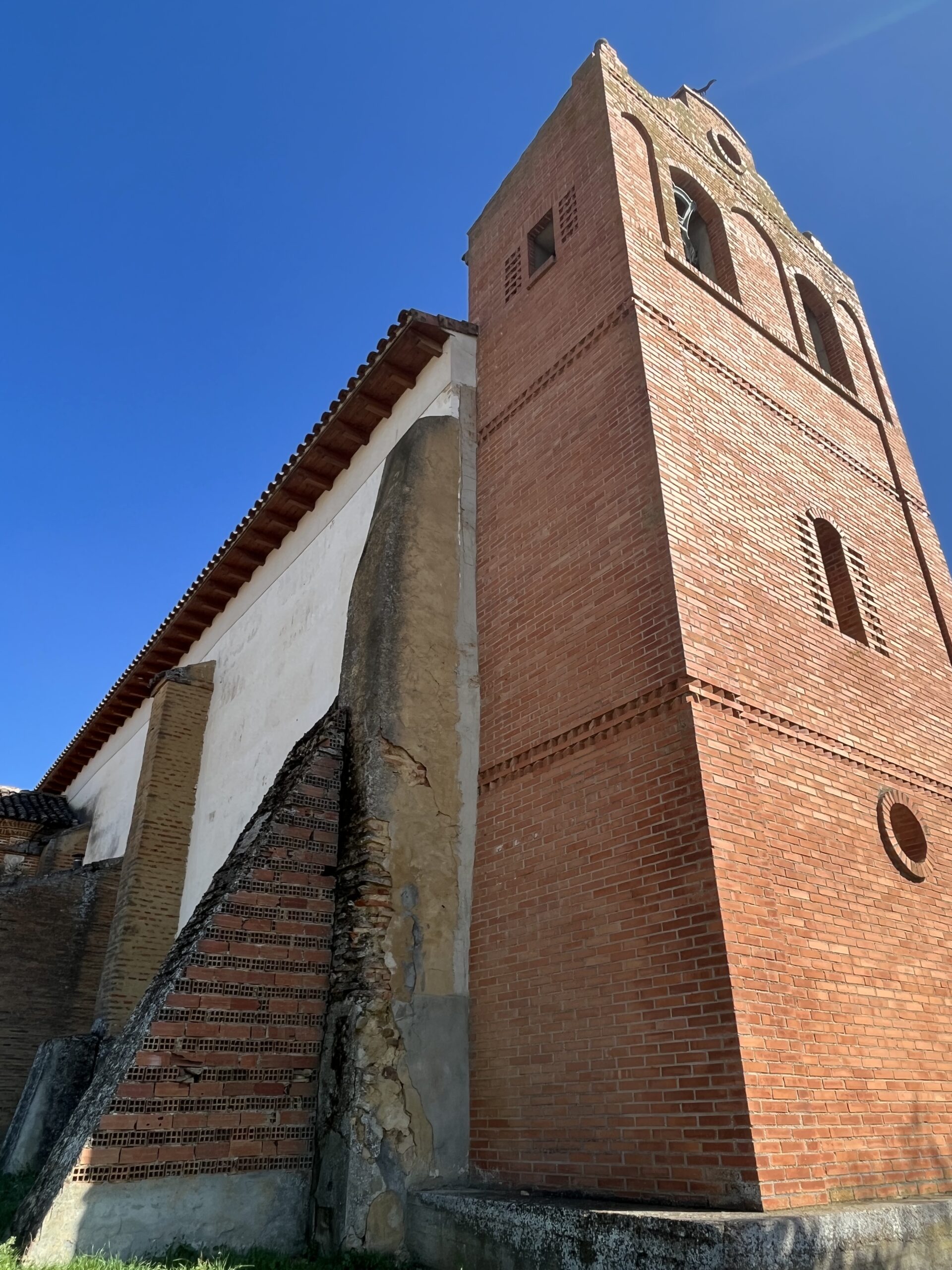Via Podiensis: Restoration
Last evening after Vespers I had a delightful time touring the church of Santa María de Blanca with Vicky from New Mexico. I first met her back in Estella when we were both trying to get into the same locked church.
She’s a comparative religions professor, and together we deciphered some things about the fabric of the church, including the fact that at some point someone had removed the panels of the Santiago altar (presumably for cleaning or restoration) and had put them back in the wrong order.
I also learned something about the three sarcophagi in the church. I knew that two of them were a prince and princess. I was more intrigued by the third, which was very unusual in that the face, instead of facing upwards in a natural position, was turned to face away from anyone standing in the nave of the church. It turns out that he was a Master of the Templars, and he had specifically instructed that the face on his tomb be turned to the east, to face Jerusalem.
This morning, the Feast of the Holy Rosary, I was up, packed, and breakfasted just after 6 AM in an effort to make up for the kilometers I didn’t walk yesterday. While my schedule is pretty flexible, the distance between towns on the Meseta is not, and there are some very long and awkward gaps that need to be taken into consideration when route planning.
It was dark when I left, and cool. Even with the street lights, I could see some of the brighter stars overhead. The street lights and did precisely what are the gravel road of the Camino, still following the highway, began. I switched my flashlight to red light with the idea that once my I suggested I could see more stars. I was not disappointed.
I begin to understand the appeal of night hiking. While the Meseta was not completely dark – there were some lights off to my left which I suspect is an airport on the horizon – the brightest light I could see was the crescent moon. And I could see stars without number.
Of pilgrims, however, I only saw three on my way to Carrión de los Condes. I heard the town’s church bells strike the hour of seven, although I didn’t actually enter the town for another 10 minutes or so.
Carrión de los Condes is the town with several beautiful churches that I had visited on previous Caminos. I hoped against hope that at least one of them was open this morning. I was also searching for a café for second breakfast. Food was going to be vital, since after the Camino left town, there was a long gap of more than 17 km to the next village.
I was immediately successful on the second breakfast front.
Afterwards, I prayed for the intentions of the Camino at the 12th century church of Santa María del Camino, which somehow seemed appropriate. There were two sisters praying in the church as well, and I noted a scattering of breviaries on the front pews.
It was 7:55 AM before I was on the Camino walking again, ready to tackle those 17 empty kilometers.
On the way out of town, I passed the magnificent Cluniac monastery of San Zoilo. It is now a very swanky hotel. What this world needs is fewer hotels and more monasteries.
Europe was once full of monasteries, full of Monks and nuns praying for the church. The vast majority of those monasteries were destroyed during the French revolution and the wars that followed (although in Spain most of them were nationalized in the mid-19th century) and the monks and nuns expelled.
I can’t help but think that many of this world’s problems, and certainly those we find today in the church, could be mitigated or at least addressed by the restoration of the monasteries as an engine of prayer for the church and the world.
The way out of Carrión de los Condes began as roadwalking – I can’t quite tell you how far because my app glitched for at least a couple of kilometers as I was leaving town. Soon enough, though, I was walking once more on a smooth gravel path next to the road.
I saw many, many pilgrims on this stretch, which began with a long stand of tall trees to the left of the path. They seemed very, I don’t know, “Elvish” to me, like an illustration for The Lord of the Rings.
After a while, the line of great trees ended to be replaced by a long line of saplings. I find in these a symbol of great hope. Twenty or thirty years from now, these too will provide shade to the pilgrims who pass this way.
We have perhaps relied to long on the great trees planted by our forefathers in the faith, and the time is it hand for us to plant new saplings.
At the first available bench, sometime before 9 AM, I shed my fleece. It has been a long, cool morning so far, but I could already tell that it was going to be a scorcher as the day wore on.
I crossed a long line of trees that indicated a river – that was a pretty normal occurrence even here on the Meseta – but after this, there were short, broad trees along both sides of the Camino road, and many more stands of trees around the fields. The vegetation, if not the terrain, was definitely changing.
At a road crossing, the Guardia Civil was out, checking on the welfare of the pilgrims passing by and offering a stamp for their credential. Naturally, I got my stamp from them. Collect them all!
It’s funny walking down the stretch of the Camino. I have memories of the floods here in 2016, and splashing through ankle-deep water on the road. Now everything is dry and dusty. And the picnic tables that were under water then are full of resting pilgrims now.
At about 9:20, I came upon a food truck – really a mobile café, complete with tables and an awning – and stopped briefly for an orange juice.
The trees started thinning out after that, though they never completely went away, and I was now seeing occasional farm buildings. Mostly these were very large barns.
It’s difficult to to get a handle on the vastness of the terrain here, where the farmland extends flat almost to the horizon in every direction. Photographs can’t seem to capture it either.
The umbrella finally went up about 10:30 AM. The air was still fairly cool whenever there was a breeze, but the sun was merciless. About this time, the Camino began to ascend a series of shallow rises.
After the third of these, I could see some tall structure in the distance, which I hoped was the first sign of a village.
Meanwhile, a butterfly landed on my glasses and would not leave. This was super distracting, and I actually had to take my glasses off and gently blow on them until it flew away. Ah, the travails of pilgrims!
Eventually, it turned out that the building I thought might be a church steeple was exactly that, but instead of being attached to a village, it was attached to an isolated cemetery well away from the main road.
Immediately after this, however, the Camino came to a hidden valley – another village you can’t see until you’re practically in it. This was Calzadilla de la Cueza, and my opportunity for an early lunch. I walked into the village just after 11 AM.
After a hearty lunch – it’s only a hamburguesa if it’s got real ham in it! – with some new friends from Latvia, Hungary, and Germany, I went to visit the village church of San Martín, but it was locked up tight. I was back on the Camino about noon, with only 6 km to go.
The way out of the village was extremely confusing, with yellow arrows pointing down practically every street. Eventually, though, I managed to get it sorted.
After a short but hairy bit of roadwalking, it was back to the gravel and dirt Camino path. This particular valley has many more trees than the surrounding Meseta, and it wasn’t long before a Camino path was flanked by them.
At this point, the gravel ran out and the path was dirt and rough stones. The highway was to my right, and an intermittent line of trees to my left. Behind them both lay fields of dead sunflowers.
By now, any ground without shade was quite hot, and I was starting to feel the warmth through my shoes.
There was more and more vegetation as I went on, scrubby bushes everywhere, and in the distance, stands of trees slowly turning into forests.
About 1 PM, the Camino pulled away from the road and inexplicably became a wide asphalt road itself. It didn’t last too long, however, before it was back to the previous status quo. It looks like at some point they had rerouted the highway perhaps.
I ran into Joseph from Georgia along the Way, and I promised to buy him a beer in the next town.
Just a few minutes later, the Camino itself crossed over the highway into the town of Ledigos. Soon I was ensconced in the bar at Albergue La Morena, buying Joseph a beer. We shared a couple, and some tapas, before he headed out for another 6 km. Me? I’m here for the night.
After the usual pilgrim ablutions, I headed to the village church. The Iglesia Santiago is made of brick, a construction material more and more common as we get deeper into the Meseta. It was unfortunately locked, but there were also piles of bricks, concrete, and other construction materials near the entrance, so it’s possible that the building is being restored.
Which seems to be the theme for today.
I’m reminded of the motto of Pope Saint Pius X, Instaurare Omnia in Christo (To restore all things in Christ)
Date: 07 October 2023
Place: Ledigos
Today started: Villalcázar de Sirga
Today’s Photos!
